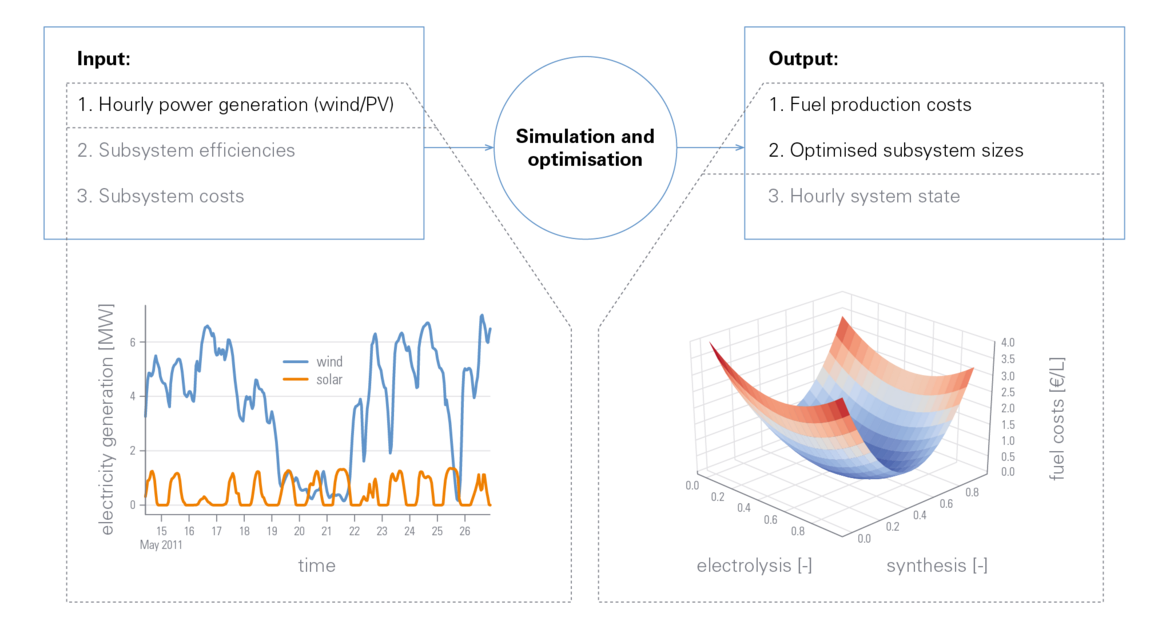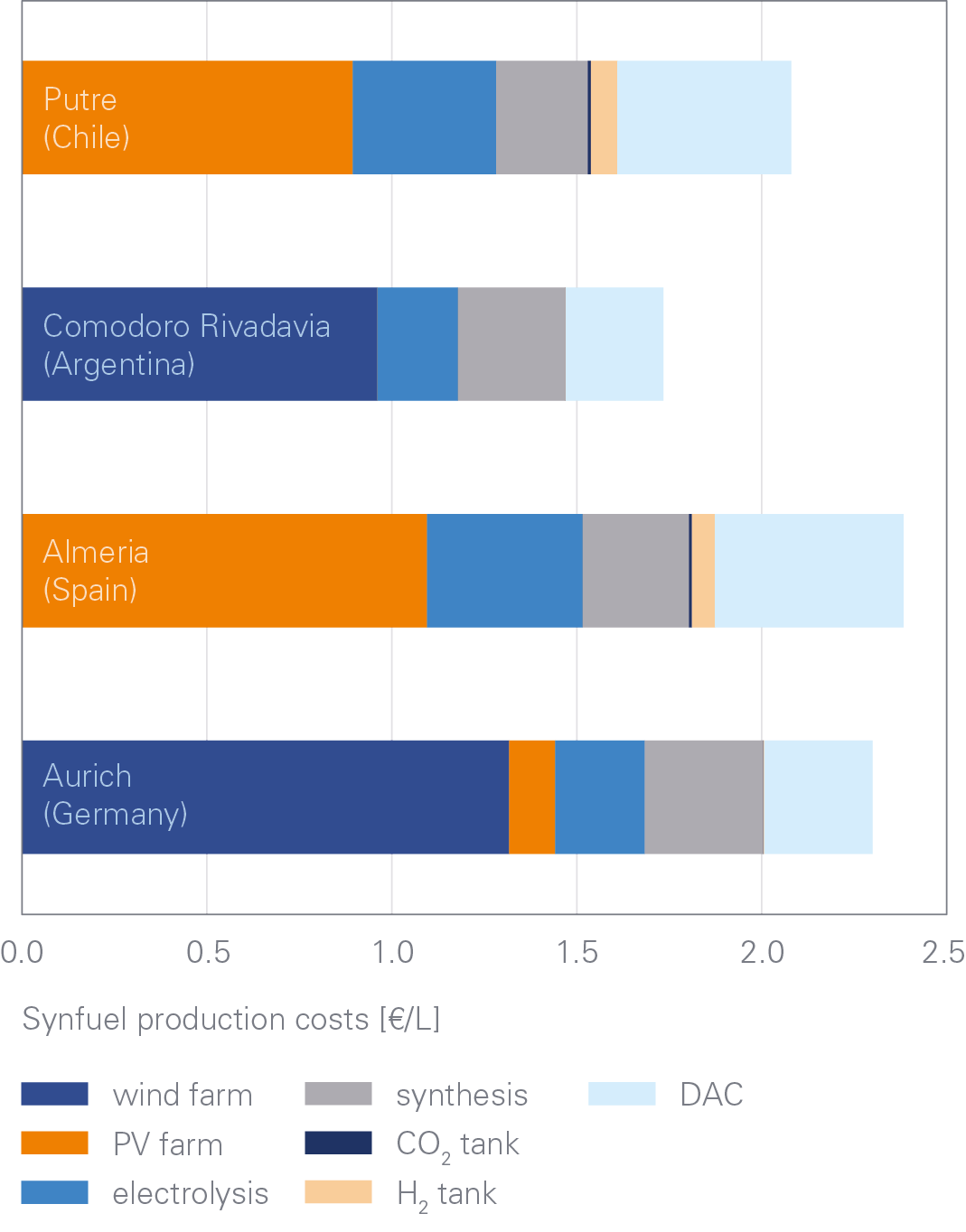Power-to-Liquid (PtL) offers the potential to provide large quantities of renewable fuel with a relatively low environmental impact. But how much does PtL fuel cost? Can it compete against fossil kerosene in a free market? And which sites are suitable for low-cost PtL production? To answer these questions, Bauhaus Luftfahrt has developed a method in the course of the PowerFuel collaborative project to estimate the production costs of PtL fuel at selected locations worldwide. The method sizes the plant’s subsystems with the goal of minimising the costs of fuel production. The climatic conditions of each site are taken into account with the help of location-specific, hourly resolved wind and solar power generation profiles. At most sites, a mix of wind and photovoltaic (PV) power minimises the costs of production. In general, good wind sites achieve lower production costs than good solar sites under the assumptions made. Furthermore, PV-powered plant designs buffer diurnal cycles by including gas storage. In contrast, it is more costeffective in wind-powered plants to follow the electricity generation directly without storage.
Our results show that PtL fuels will likely cost more than 1.50 €/L in the near future. PtL production in Germany is expected to be more expensive than at international locations with more favourable solar or wind conditions.




